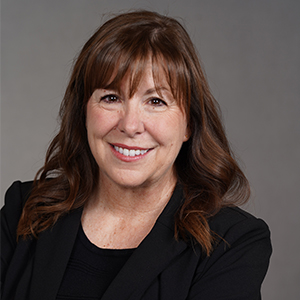Like many parts of the mortgage industry, the servicing business is undergoing some seismic changes. Having largely dug their way out of legacy foreclosure issues, servicers now find themselves in a low delinquency environment that feels relatively stable. However, today’s blue skies can become tomorrow’s hurricane, and servicers — especially veterans of the financial crisis — are always looking over their shoulder so they can prepare for what’s next.
During the MBA’s National Mortgage Servicing conference this week in Orlando, it was evident that in the current environment servicers are using the relative calm to take stock of their operations, train staff, shore up compliance and invest in technology.
From the general sessions and panel topics to conversations during the breaks, several themes became clear:
1. Natural disasters are the new normal
On a panel covering natural disasters, Shana Udvardy, climate resilience analyst for the Union of Concerned Scientists, outlined the new risks as a result of climate change.
Whereas homeowners — and servicers — have been used to considering risks and remediation in flood zones, the new climate reality of more moisture in the air and more heat in the oceans means a significant increase in flooding in many new areas. Rising sea levels mean more frequent flooding at high tide, and storm surge damage farther inland.
As natural disasters continue to proliferate, underinsurance is a real problem. And there may not be time to recover between one natural disaster and the next, requiring servicers to be more strategic as they work out forbearance for homeowners.
The takeaway? Leverage technology to gauge your concentration risk, develop a natural disaster “playbook” that you practice with your team ahead of time, and educate homeowners on what they can do to help.
2. The borrower is now front and center
This is a significant change. In the past, servicing was mostly focused on the asset, and the borrower was someone you only talked to if they got behind on payments. Today, servicers are just as invested in engaging with consumers as originators, and are investing in tech to understand and cater to their needs.
The end goal? Retention, which still sits somewhere between 9% and 17%.
Servicers are offering self-serve options for everything from monthly payments, to credit checks and even loss mitigation communication, depending on the homeowner’s preference. This demands a higher touch from the first interaction with the borrower and is fueling the drive to have a seamless process that isn’t separated into origination/servicing lanes.
This would have been a pipe dream just a few years ago, but as technology has evolved and more lenders keep loans in portfolio this is being actively worked on and implemented.
The takeaway? If you’re still focused mostly on the asset, you are way behind.
3. Servicers want a larger piece of the homeownership experience
One of the limitations servicers face is the relatively small margin baked into servicing. You can’t just raise the cost of servicing, so what can you do?
You can leverage your unique 30-year relationship with the consumer (see point No. 2 above) to expand into different business lines. Home improvement is a natural expansion area, and protects the asset at the same time it helps the homeowner. But don’t just think home improvement loans — this could be providing routine services that servicers already have networks to manage from REO, like cutting the grass.
The goal is to become a trusted advisor so that when the borrower needs anything for their home, you’re the natural choice to solve their problems.
The takeaway? Think out of the box and think big, otherwise, think about the next point.
4. Consolidation will continue
Small servicers are being bought by larger shops, while regional players (most notably PHH and BB&T) are joining forces. Everyone expects consolidation to continue, and it’s easy to understand why M&A is so attractive right now. Acquiring another company is an easy way to grow business and with rising compliance costs and a need to invest in technology, there are plenty of servicers willing to sell.
The takeaway? Until regulations ease or there’s a shift toward more delinquencies, consolidation will continue and may even increase.
5. Regulation is still stifling innovation
Increased regulation has been the hallmark of servicing since the financial crisis, understandably. But so many of the changes servicers need to make to serve homeowners and compete effectively are unattainable if regulatory costs continue to go up.
As mentioned earlier, there is only so much money servicers can make from servicing, and if they’re spending the bulk of that on compliance, there’s little left for tech investment. Default servicing is notoriously hard to automate, so compliance means keeping humans in the mix.
Marina Walsh, vice president for industry analysis at the MBA, discussed the rising costs of experienced compliance talent in the market outlook session. “Given all the regulations and servicing standards, you can’t just let people go — they have the expertise. Even if you have one delinquent loan, you need that default infrastructure in place.”
In addition, as oversight shifts from federal to the state regulators, the compliance risk multiplies. Now, instead of just dealing with the Consumer Financial Protection Bureau — as onerous as that can be — you might have eight to 12 states looking at your data for servicing compliance, all with different standards.
The takeaway? Servicers find themselves in a catch-22 situation where the regulations to ensure consumer safety and customer service make it difficult to invest in the technology that could deliver those very things.






